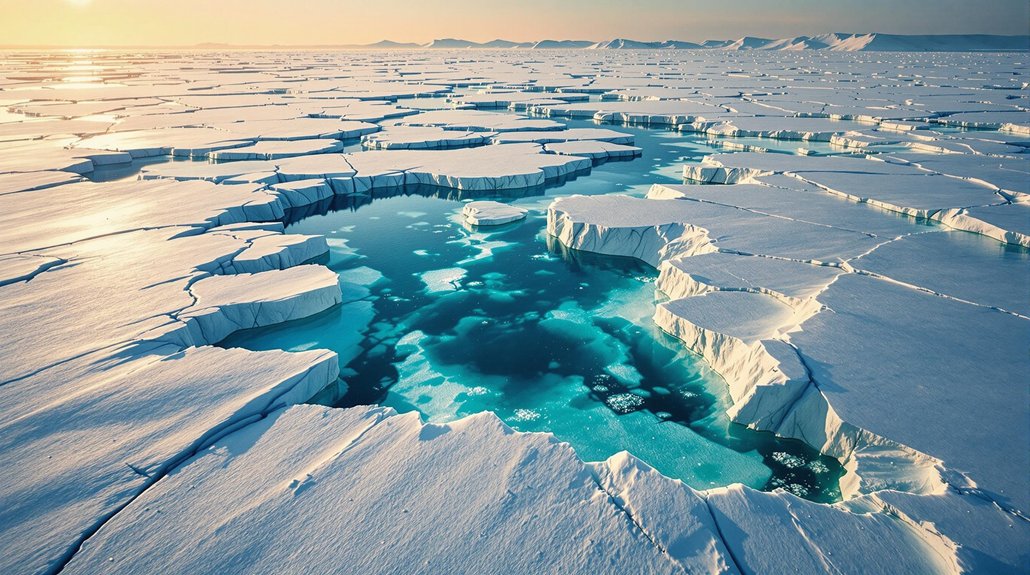Ice—our planet’s giant air conditioner—is disappearing fast. Both poles are melting at alarming rates, and the consequences are anything but straightforward. Scientists have discovered a bizarre paradox: as polar ice melts, some regions are actually seeing more ice formation temporarily. Yeah, you read that right. When freshwater from melting glaciers pours into oceans, it freezes more easily than salty seawater. Nature’s cruel joke.
This freshwater influx is wreaking havoc on global weather patterns. Australia drowns while Europe bakes. Makes perfect sense, right? Wrong. But that’s exactly what’s happening. The changing dynamics at the poles are disrupting atmospheric and oceanic circulation patterns worldwide, creating a climate lottery where some places hit the disaster jackpot.
The science behind this madness stems from complex interactions. When polar ice melts, it doesn’t just raise sea levels—it changes how entire oceans function. Similar to the Miocene era, these changes can lead to altered wind patterns that significantly impact ocean circulation and temperature distribution. Freshwater forms a cap on ocean surfaces, preventing normal mixing. Winds shift. Currents change. Weather goes haywire. Polar regions are warming faster than elsewhere on Earth, amplifying these disruptions to global climate systems.
History shows this isn’t unprecedented. About 14 million years ago, during the Miocene era, Antarctica experienced a similar paradox—expanding ice sheets followed by Southern Ocean warming. Different cause, same confusing outcome.
Meanwhile, melting permafrost is releasing methane—a greenhouse gas on steroids. This accelerates warming in a vicious feedback loop. Less ice means less sunlight reflection, which means more warming, which means less ice. Rinse and repeat until coastal cities need snorkels.
The implications for ecosystems are devastating. Polar bears are running out of hunting grounds. Marine food chains are collapsing. And humans? We’re getting the full package—droughts, floods, and everything in between. The global response mirrors LEGO’s approach to sustainability, with innovations in renewable energy becoming crucial for mitigating further climate damage.
Scientists with advanced climate models are working overtime to understand these paradoxical effects. But one thing’s crystal clear: what happens at the poles doesn’t stay at the poles. Australia’s floods and the Northern Hemisphere’s droughts are just the beginning of a wild climate ride that’s only picking up speed.
References
- https://www.earthdata.nasa.gov/news/feature-articles/polar-paradox
- https://phys.org/news/2014-04-decipher-climate-paradox-miocene.html
- https://time.com/6174966/north-south-pole-melting-climate-change/
- https://earthobservatory.nasa.gov/features/PolarParadox
- https://www.biologicaldiversity.org/programs/climate_law_institute/the_arctic_meltdown/index.html








